Dragons and ghosts, resurrected in 4K
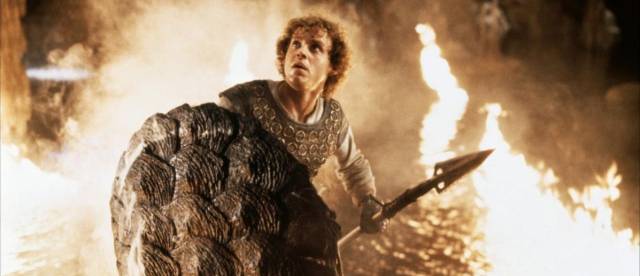
I haven’t taken the step (yet) of moving up to 4K, although there’s a slowly increasing number of 4K disks in my collection due to dual-format releases (the method the industry used to suck me into Blu-ray years ago – and I’ve seen signs of UHD-only extras to add to the pressure). My feeling with new developments is always “how much better could it be?”, even though past experience has shown that, yes, it actually can be quite a bit better – VHS looked okay for years, but then I got into laserdisc and that was so much better; at first, DVD didn’t seem to improve on laserdisc and my collecting in both formats ran parallel for a few years. But then DVD rapidly improved and, being a lot cheaper than laser (and easier to store), I moved on decisively. I resisted for a couple of years while Blu-ray vied with HD-DVD, but eventually moved on again (though I will still occasionally buy a DVD if something isn’t otherwise available). No doubt it will eventually be the same with 4K.
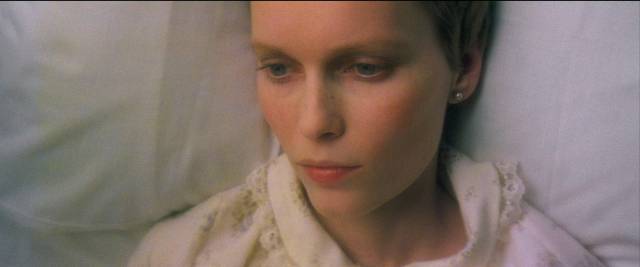
But even though I haven’t taken the plunge, I am benefiting from 4K because, while many releases in the format are newer mainstream titles, there’s been a resurgence in the restoration of older movies – a little like a return to the early days of DVD when companies were eager to exploit back catalogues which had lain dormant for a while. Many of these restorations are also showing up as remastered Blu-rays and that’s where I get hooked. While some 4K releases are baffling – what was Vinegar Syndrome thinking when they lavished a 4K restoration on Bill Hinzman’s extremely cheap and barely competent FleshEater (1988)? – but the format is also giving new life to movies which have been unjustly neglected.
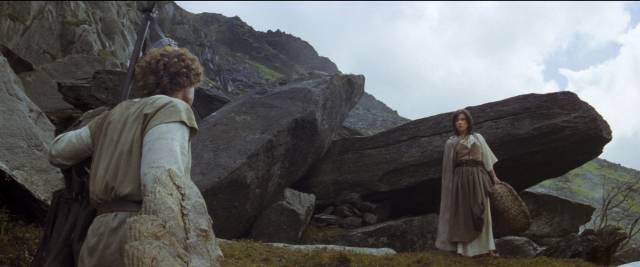
Some of these have never fared well on home video for technical reasons, because video has always been far less sensitive than photo-chemical film, but the new technology is proving more adept at handling a wider range of contrast, capturing subtleties of detail and colour which were beyond standard definition and even earlier iterations of hi-def, which is good news for movies which depend on darkness for their impact. The greater sensitivity of 4K to the subtleties of celluloid imagery means that movies which have never looked particularly good on video can now be seen again in something like the form in which they were projected on a big screen in 35mm. This clarity and detail even holds up when the new masters are transferred to Blu-ray, though I presume the results are even better on UHD.
*
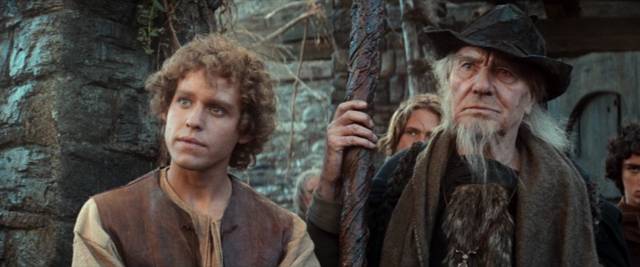
Dragonslayer (Matthew Robbins, 1981)
Matthew Robbins and his writing partner Hal Barwood were relatively young and definitely inexperienced when they made an impressive debut with the script for Steven Spielberg’s The Sugarland Express (1974), going on to John Badham’s The Bingo Long Traveling All-Stars & Motor Kings (1976) and Spielberg’s Close Encounters of the Third Kind (1977) before Robbins made his directing debut with Corvette Summer (1978), a somewhat rocky teen comedy which was also Barwood’s producing debut. But despite this decent track record, nothing suggested what would come with their second feature as co-writers, producer and director.
Dragonslayer (1981) was a hugely ambitious fantasy epic co-financed by Paramount and Disney, shot on locations in Scotland and Wales and at Pinewood Studios, and utilizing cutting edge effects techniques developed by George Lucas’s Industrial Light & Magic, a company set up for Star Wars and looking for other productions to help cover overheads and provide opportunities to refine new effects technologies between Lucas’s own projects.
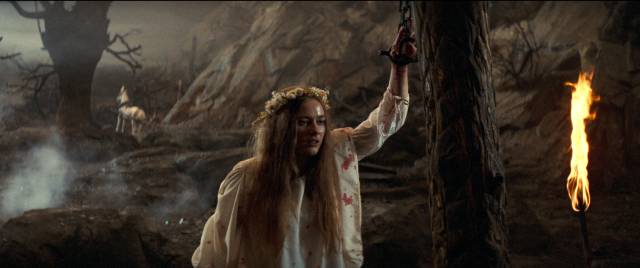
But it’s not all that business stuff that matters; what counts is the quality of the world-building and storytelling. Robbins and Barwood’s script displays a commitment to fantasy rare in big studio productions of the time. This isn’t simply a case of someone looking to exploit a potential audience; every moment of the film expresses a genuine love of the genre, with a neatly constructed narrative, engaging characters, and a well-thought-out imaginary version of Medieval history. The production design by Elliot Scott has the same air of grungy authenticity Roy Smith brought to Monty Python and the Holy Grail (1975) and Terry Gilliam’s Jabberwocky (1977), grounding the fantasy in a satisfying sense of reality.
This may be the familiar tale of an inexperienced young man who embarks on a dangerous quest during which naivety and youthful over-confidence gradually evolve into maturity and genuine courage, but Robbins and Barwood fill it with detail and nuance. There is more depth here than can be found in the structurally similar Star Wars. The movie’s world is poised at a moment of transition, one age – that of magic and monsters – drawing to a close, another – represented by the spread of Christianity – coming into being.
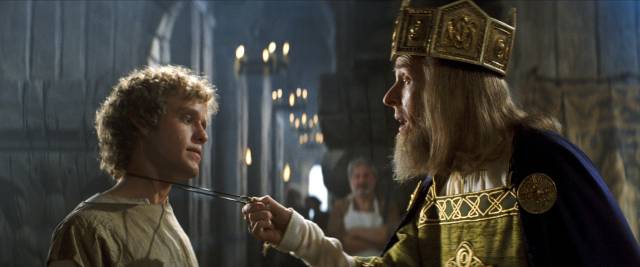
Casiodorus Rex (Peter Eyre), ruler of a small kingdom, has made a deal with a monster, Vermithrax Pejorative, last of the dragons, with the creature being regularly fed a virgin chosen by lottery in exchange for leaving the rest of the land alone. A small band of peasants, tired of seeing their daughters sacrificed, travel a great distance in search of the legendary sorcerer Ulrich (Ralph Richardson) in hopes that he can free them from this oppression. Agreeing to make the arduous journey, Ulrich is confronted by the king’s henchman Tyrian (John Hallam), who stabs him to death. After the funeral, the peasants head home defeated … but Ulrich’s young apprentice Galen (Peter MacNichol) follows with the faithful old servant Hodge (Sydney Bromley), who carries a secret vital to the quest.
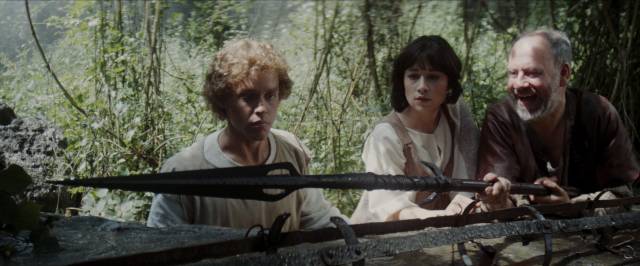
Galen tells the peasants that he will take on the mission, offering a few displays of minor magic to persuade them that he’s the heir to Ulrich’s power. During the long trek, Galen discovers that Valerian (Caitlin Clark), the boy leading the group, is actually a girl whose true nature has been hidden by her parents since birth because of the lottery. Wanting to impress her, Galen acts rashly and, arriving in her land, he brings down a rock slide on the entrance to the dragon’s lair. Although claiming to have killed the beast, he has only angered it and, with the king’s agreement broken, it begins to lay waste to villages and crops.
Having made things worse, Galen has also placed Valerian in danger because the truth of her identity has been exposed and she will be included in a new lottery. With things at their darkest, Galen finally understands the secret Hodge was carrying and, together with the revivified Ulrich, he finally manages to defeat the dragon, ending the age of magic and paving the way for new religious myths.
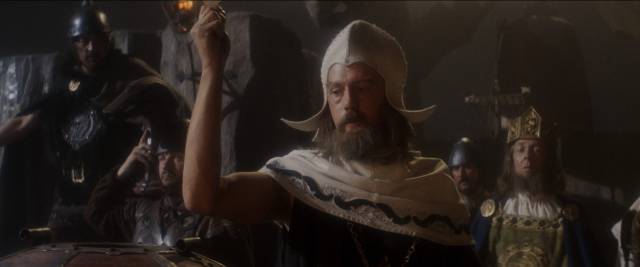
With a tightly structured script, well-written dialogue and a fine cast (MacNicol and Clark have a great deal of charm; Richardson is a delight as Ulrich; and the rest of the cast is filled with fine character actors who treat the material with great sincerity), Dragonslayer escapes the shadow of Star Wars and makes a strong impression on its own terms. But what makes it the best dragon movie ever (Rob Bowman’s Reign of Fire [2002] comes in second, because its post-apocalyptic setting lacks the full mythic quality of the medieval world) is the richness of its imagery – Derek Vanlint does wonders with darkness, rivalling Gordon Willis for an audacious use of under-lighting – and the superb special effects by Phil Tippett, Peter Kuran, Tom St. Amand and the ILM technicians who wedded classical stop-motion animation with the computer-controlled camera techniques developed for Star Wars to bring the dragon to life without any of the tell-tale jitter that even the best stop-motion typically displays. This was achieved by rigging the dragon so that, once the animator had adjusted the model’s position, motors would add a very slight movement during the exposure of each frame, producing a subtle touch of motion blur which makes the dragon seem fully alive. The results are far more impressive than anything CGI has since come up with because the model is a physical object, on a physical set, reacting to carefully designed lighting. Vermithrax is one of the finest pieces of three-dimensional animation achieved before computers all-but obliterated the art.
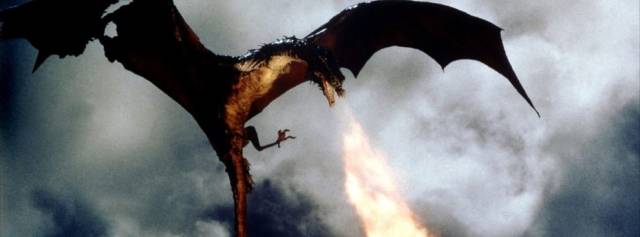
It’s baffling that Dragonslayer, one of the finest fantasy films ever made, was a box-office failure, but its disappointing reception probably explains in part why it has never had much of a home video presence. Before the new Paramount restoration, it was released on DVD in 2003, but the format back then wasn’t really up to the task of rendering the very dark, richly textured imagery and the results were rather dull and murky. Which is why the new release is so impressive – it looks gorgeous even on Blu-ray, the forty-two year old effects clearly displayed in all their glory. Everything about the film works flawlessly, giving it the timeless quality of a genuine classic.
In addition to the excellent transfer, the disk includes a commentary with Robbins in conversation with admirer Guillermo Del Toro, a five-part making-of totalling sixty-five minutes, a sixteen-minute collection of screen tests for the Galen and Valerian roles, and a trailer. This will definitely be one of my favourite releases this year, a superb showcase for a form of filmmaking which no longer exists, and the resurrection of a sorely underrated fantasy masterpiece.
*
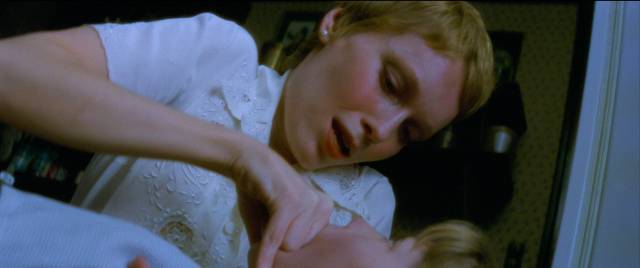
Full Circle/The Haunting of Julia (Richard Loncraine, 1977)
While not quite on that level, the new edition of Richard Loncraine’s Full Circle aka The Haunting of Julia (1977) is another welcome resurrection of a long-neglected movie. I don’t think I’ve seen it at any time since its original theatrical release, but certain images (particularly the final shot) remained vivid in my memory. Based on Peter Straub’s first horror novel (following two non-horror books), the film was released a couple of years before the author’s big critical and commercial breakthrough with the monumental Ghost Story in 1979. That masterpiece was given its own appallingly bad adaptation in 1981 (directed by an ill-suited John Irvin) and, strangely, none of his subsequent dozen books has ever been tackled by filmmakers (unlike his contemporary, and occasional collaborator, Stephen King, whose own work has spawned more than three-hundred adaptations). Kim Newman, in an interview on the new disk, attributes this to the particular literary qualities of Straub’s work which simply don’t translate to film; his narratives are harder to grasp than King’s more accessible stories.
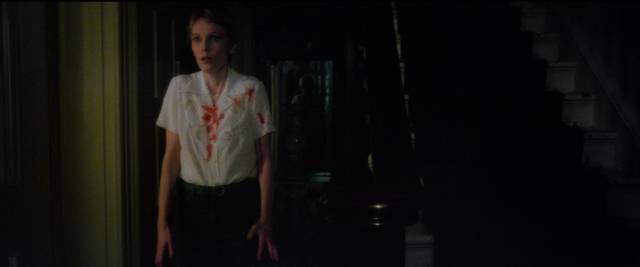
I long ago had a copy of the paperback of Julia, but for some reason never got into it. In fact, Ghost Story is the only Straub book I have read (apart from his first collaboration with King, The Talisman). Looking back, it seems puzzling that I loved that book but never felt an inclination to read any of the others (though I know I bought at least two of the ones which followed it – Shadowland and Floating Dragon). I’ve had a similar experience with Clive Barker’s works, some of which held a powerful draw for me, while I just couldn’t muster any interest in others. As with movies, our interactions with books contain a mysterious element of chemistry.
But I digress … Richard Loncraine’s The Haunting of Julia, or Full Circle as it was known in England and here in Canada, is an atmospheric ghost story which contains echoes of other films, perhaps to its detriment, but grows stronger as it progresses towards its bleak ending. Not having read the book, I can’t speak to issues with the adaptation (Kim Newman raises some interesting points in his interview, particularly about some major alterations in the plot and the injection of a number of Omen-style deaths not present in the novel), so my response is to the movie itself.
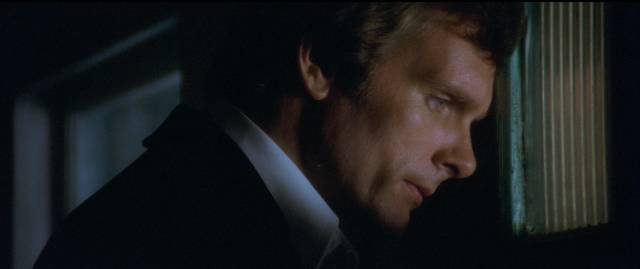
For me, it takes a little while to settle in, partly because the story centres on Mia Farrow in her full-blown jittery neurotic mode, something which requires a firmly grounded setting (as in Rosemary’s Baby or Secret Ceremony [both 1968]), but here we get no time to orient ourselves before the neurosis sets in. Things start with a brief scene of Julia, her busy husband Magnus (Keir Dullea) and their young daughter Kate (Sophie Ward) having a hurried breakfast. While her parents are distracted, Kate gnaws too quickly on an apple and begins to choke. Desperate, Julia realizes that it’s going to take too long for an ambulance to arrive and she attempts a crude tracheotomy with a kitchen knife.
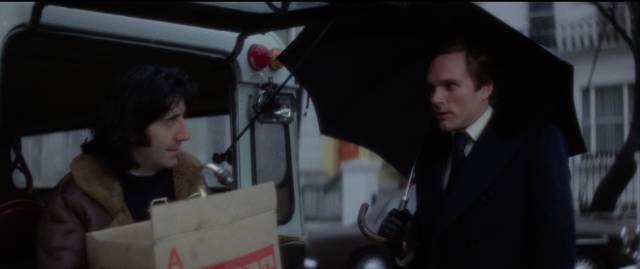
After months in a psych ward trying to come to terms with the trauma of Kate’s death, Julia flees from Magnus when she’s released and buys herself an old townhouse in Holland Park. In a vulnerable state, she begins to sense a presence in the house which she believes may be Kate. She even agrees to allow a seance with a medium named Mrs. Flood (Anna Wing), which naturally doesn’t go well – the psychic senses something terrible and flees, refusing to tell Julia anything except that the uneasy spirit she briefly contacted was a boy, not a girl. This sets Julia off on an investigation into the history of the house and the death of a young boy during the war. What she learns too late is that the young girl she catches glimpses of is not Kate at all, but rather a malevolent little monster who manipulated her group of young acolytes into killing and mutilating the boy, only to be killed in turn by her own mother – but her death didn’t put an end to her murderous behaviour and by moving into the house Julia has stirred the girl’s spirit to resume her killings.
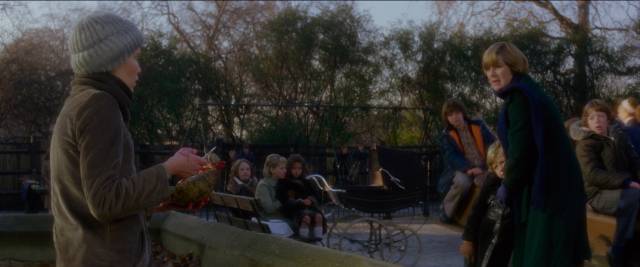
The most obvious cinematic model for the film is Nicolas Roeg’s Don’t Look Now (1973); both films begin with the accidental death of a young child, with the traumatized parents left to pick up the pieces of their lives. In Don’t Look Now, mother Laura (Julie Christie) believes she senses the presence of her daughter, while father John (Donald Sutherland) clings to a disbelief in the supernatural, and yet it’s he who begins to catch glimpses of a small figure who resembles the dead girl. Laura meets a medium and tries to make contact. A series of violent deaths occur, complicating the couple’s attempts to deal with their trauma. And finally, in both films the protagonists, misunderstanding what they have seen and experienced, are drawn to their own deaths – John in Don’t Look Now, Julia in Full Circle.
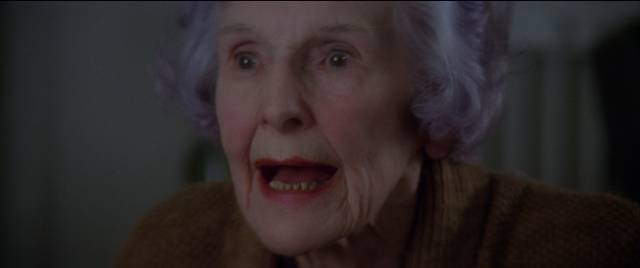
Loncraine is not as accomplished a filmmaker as Roeg and the elements of Julia don’t mesh as smoothly, but he does create moments of effective atmosphere and gets good performances from the cast – Farrow gradually becomes stronger once she embarks on her investigation, action giving her a way out of that twitchy vulnerability, even if it does lead her in the wrong direction. Tom Conti is pleasant in a largely thankless role as Julia’s supportive friend Mark, while Dullea is untrustworthy as Magnus, who seems more concerned about being cut off from his wife’s money than he is about her well-being (his presence raises memories of the equally untrustworthy brother in Otto Preminger’s Bunny Lake Is Missing [1965]). The rest of the cast is filled out with a familiar roster of British character actors – Jill Bennett, Cathleen Nesbitt, Mary Morris, Peter Sallis, Nigel Havers…
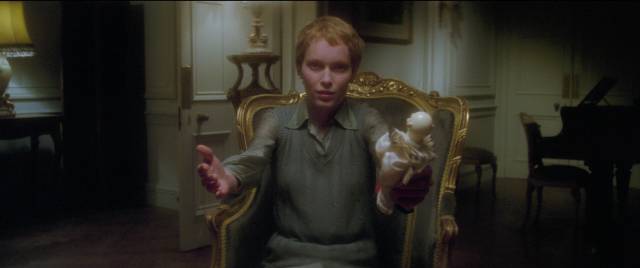
The Haunting of Julia belongs to that group of ghost stories, like Peter Medak’s The Changeling (1980), in which supernatural events lead a troubled character into an investigation of some past crime or tragedy which has remained unresolved for many years, though here uncovering the crime doesn’t lay the uneasy spirit to rest … evil lives on.
I was a little annoyed to discover that Scream Factory’s dual-format edition is actually a stripped-down version of the recent BFI release – the transfer and all the extras (commentary and a handful of featurettes) are all from the BFI edition, but the British set (the first Flipside release in 4K) includes an additional hour of interviews. Nonetheless, the U.S. edition is still a showcase for a long-neglected movie which deserves to be better known.
Comments
If you do decide to get into 4K, it would be wise to get a highly recommended player. The 4K discs are more fragile and problematic than standard blu-ray discs. My guess is so much more data is crammed onto 4K discs, that the slightest flaw, like a tiny scratch or fingerprint, will cause the discs to skip or freeze up.
I was very careful handling my HD DVDs as they were much more fragile than blu-ray discs. The slightest fingerprint or scratch would cause the discs to act up. Had I known this ahead of time, I never would have bothered with the HD DVD format.
That’s one reason I’ll keep putting it off – it’ll need a lot of research and the technology is bound to keep evolving quite quickly … I’d be annoyed if I got stuck with sub-par equipment. A friend is dipping a tentative toe into 4K thanks to his PS5, though he has yet to upgrade his TV (the player downconverts, so the results are similar to standard Blu-ray, but the disks seem to play well enough).